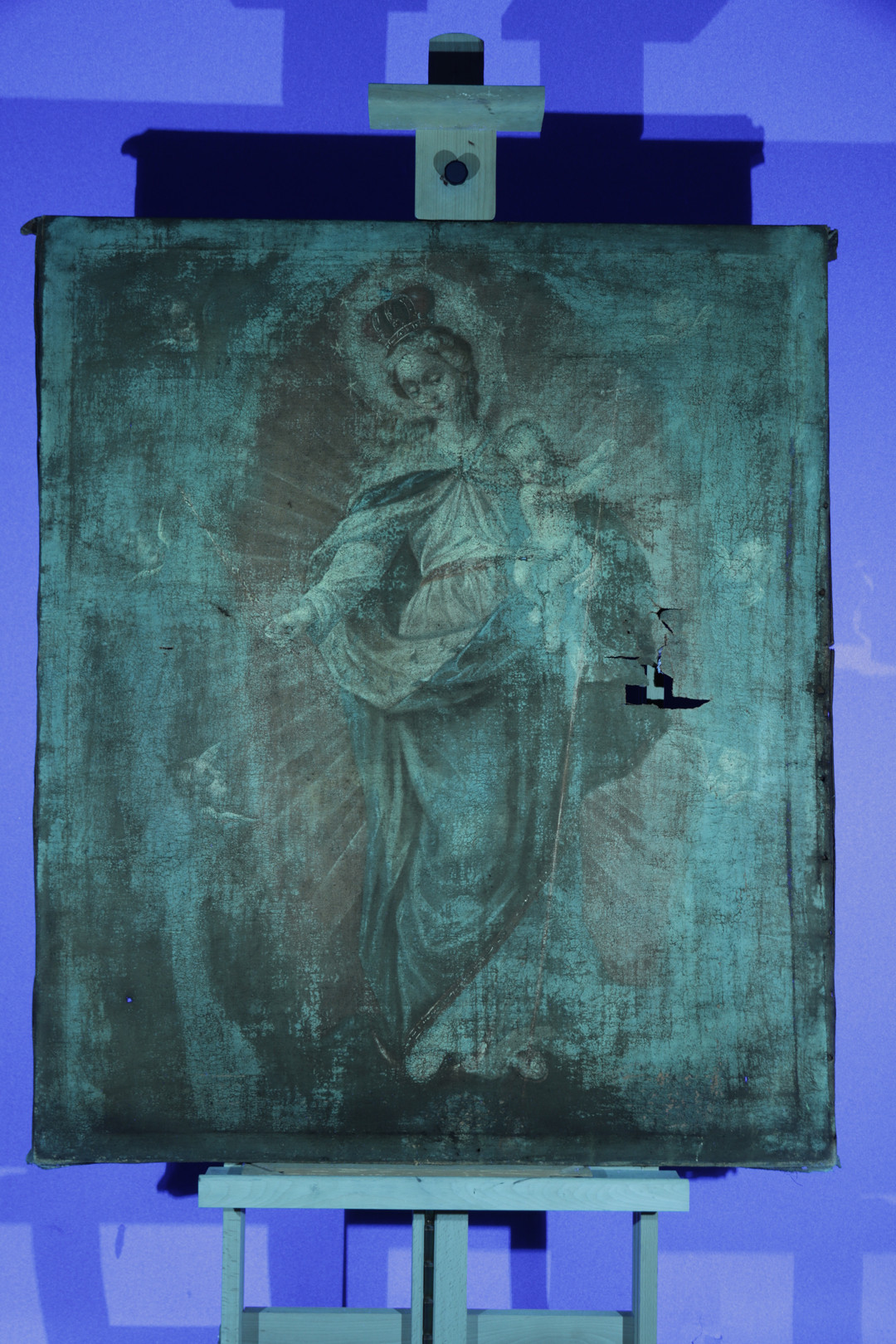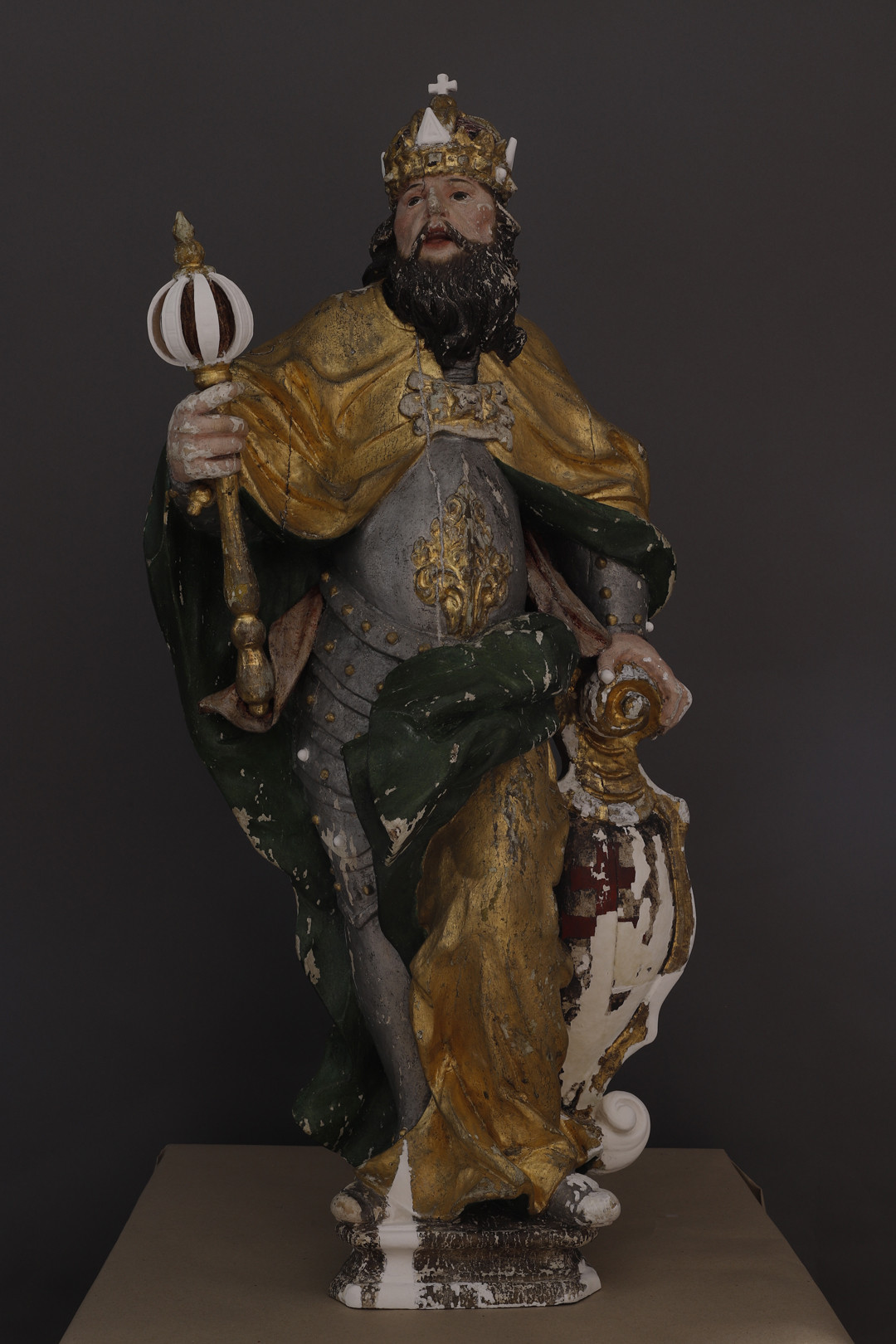Veronika Škopková↓
Gallery
Studies
| 2015–2022 | Restoration of Painted Artworks, AVU |
| 2018 | Painting 4, AVU (Marek Meduna, Petr Dub) |
About the work
Development and technology of wooden lower painting frames
In the final year of my studies, I worked on the restoration of an 18th century painting, completing work on a wooden polychrome sculpture and my diploma thesis.
In the theoretical part of the project, I discuss the assignment that resulted from one set of studio tasks. This was an assignment for a series of lectures in which we discussed individual topics from the book Conservation of Easel Paintings. I chose as my topic the chapter on the lower tension frames of paintings on canvas. This is still a rather neglected topic so I decided to choose the lower frames as a topic for my theoretical diploma thesis. I deal with the development of the frame technology and its history, the material used to produce it and other accessories. Frames have undergone a long evolution from their early use in painting to contemporary work. I see my theoretical work as an insight into this rarely researched field.
During my diploma year, I worked on the restoration of a larger painting of Assumpta with Baby Jesus from the 18th century (126.2 × 105.7) from the Czech Museum of Silver in Kutná Hora. The work is anonymous, it is a scene of a Madonna with baby Jesus of Assumpta type in a red aura. This work has undergone a complete restoration. The painting was not exhibited and was in a state of disrepair. Non-invasive survey methods and microscopic sampling were used. The work was removed from its inadequate frame and the canvas backing was gradually flattened using moisture and pressure. Next, a large crack located approximately in the center of the work was cemented and then the painting was placed on a temporary tensioning frame and placed in a humidity chamber, dried and leveled using weights and then consolidated on a vacuum table. In the next major phase of the restoration, the work was tensioned on a solid pad and surface dirt, degraded varnish and localised overpainting obscuring elements of the scene were removed. An equally extensive part of the restoration consists in the sealing of the lost parts of the painting and subsequent retouching.
Next, I worked on finishing the polychrome sculpture. It is a wooden polychrome sculpture of Saint Ladislaus of Hungary from the 18th century (also from the Czech Silver Museum in Kutná Hora). Historically, it is a person of a ruler, known better in Poland and Slovakia. The statue is approximately 90 cm high and is characterised by its high-quality Baroque carving. The wood of the sculpture was quite well preserved, but not all the smaller wooden accessories were preserved. The sculpture had a loose layer of paint throughout, in two layers. The lower layer of the original was fragmentarily preserved and so decided to keep it. A non-invasive X-ray survey documented the assembly of the individual parts of the sculpture. Samples of the color paint layer and the base were taken. One of the main issues was, among other things, the consolidation of the color paint layer. The sculpture has therefore undergone a complete restoration. Treatment against biological infestation, consolidation of the paint layer, removal of surface dirt, filling in missing parts, cementing and retouching were carried out.


